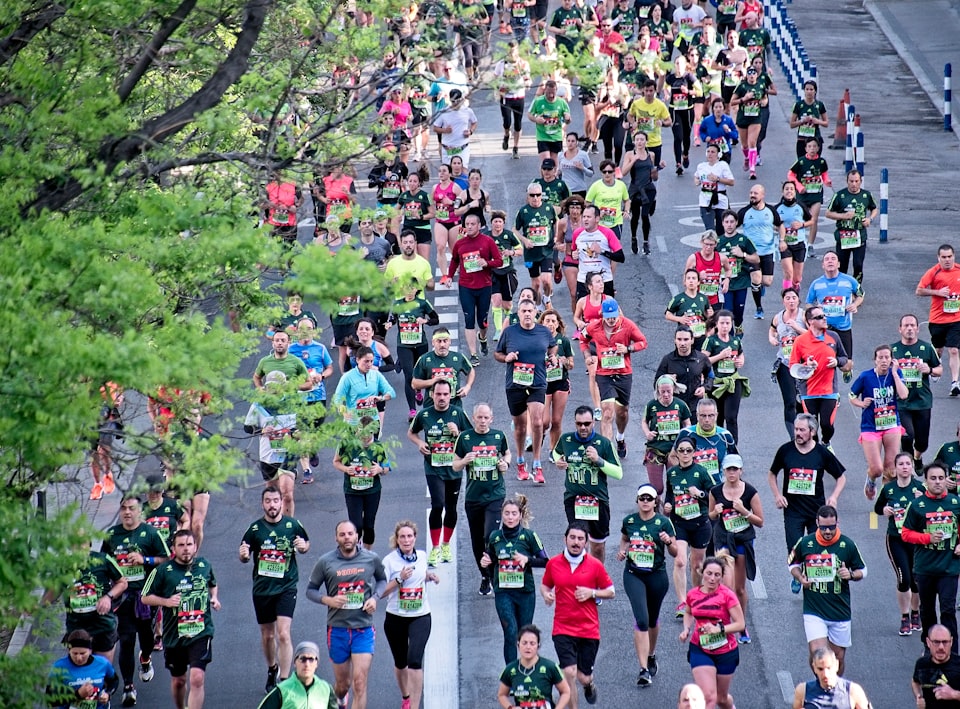How I Got Faster: Tips and Techniques for Speed Training in Running


About a year ago, I felt like I was getting slow. I ran a 5K and ran my heart out to end up with a time of about 24 minutes. My lifetime PR is just under 20 minutes. Granted, that was when I was 20 years old and I am 32 years old now but I have never got out of shape. In fact, I run WAY more now than I did back then. Around that same time about a year ago, I did a timed 1 mile run and ran just under 7 minutes.
My lifetime best mile run is 5:45/mi. I’m getting slow, I need to do something about it.
Upon further reflection, the reason why I was getting slow is because I was running slow. My training had no intention behind it. I would go out on these 4–5 mile runs that weren’t hard but they also weren’t easy either. They were kind of mediocre. It was enough to make me feel like I was getting a good workout but I also wasn’t gassed at the end of them.
This is where I went wrong. For about 8 years, I was just running like a casual jogger. I was wasting time not being intentional about my training. I needed to have a plan.
I took it upon myself to start making a plan. I realized the main reason why I was faster back then was I did the following A LOT:
- Interval training
- Wind sprints
- Conditioning drills
- Strength training
I didn’t know it at the time, but a lot of my training from playing football was actually making me a faster long distance runner. Granted, I didn’t have as good of an endurance foundation as I do now but I had an extra gear that seems to have been lost over time.
After incorporating this kind of training sparingly for the last 3 months, I was able to cut about 45 seconds off that 1 mile time. Yesterday, I was able to run a 6:20/mi. I’m still not 100% satisfied with the results but the needle is moving in the right direction.
Do you feel like you’re getting slow or want to get faster? These are some of the techniques that I have found to add a little extra spring to your step.

Interval Training
When I started interval training, smart watches didn’t exist (I feel like I’m starting to sound old now). What I would do is I grabbed a simple Timex watch that had a basic interval timer. I would set the interval to do 1 minute for my easy jog and 30 seconds where I would sprint as hard as I could. Below are all interval techniques that I will use:
Intervals With A Watch:
- 1 minute jog/ 30 seconds hard- repeat 6–10x.
- 2 minute jog/ 45 seconds at about 90%- repeat 6x
- 1 minute jog/ 1 minute at about 90%- repeat 10x
Track Intervals:
- 400m repeats x 10 (3 minute rest between)
- 800m repeats x4–6 (4 minute rest between)
- Ladders (100m hard, 100m easy, 200m hard, 200m easy, 400m hard, 400m easy, 200m hard, 200m easy, 100m hard, 100m easy)
Treadmill Intervals
Use the same concept for treadmill intervals as you would with any of these. With a treadmill, pick the numbers you want to run at (I’m current at 9.5 mph for hard and about 5 mph for easy).
Strength Training
Strength training is always said by every trainer and coach to be so critical but yet so many runners ignore it. I get it. You don’t want to do a leg day because you might have sore legs for your long run tomorrow. You also may feel slower when you begin strength training since you’ve pushed your legs harder than you normally would. Below are my favorite strength training exercises for running:
- Box jumps
- Goblet squats (kettlebell)
- Bulgarian split squats (kettlebell)
- Leg Curls (hamstrings are important!)
- Fire hydrants (for the hip flexors)
I’m going to write a whole new piece on the importance of strength training for runners to get a more detailed plan into it. If you are a runner and not strength training, start with the basics today. It’s critical.

Hill Training
If you live in the flatlands like I do, hill training can be hard. No one wants to drive 20 minutes just to run hills. The alternative I have found is to run the stairs. If you don’t think you have stairs, public accessible stairs are all around you without you even knowing it. Parking garages usually have about 4–5 flights of stairs. There’s a place where you can find them if you open your mind up to the possibilities.
Consistency
One of the hardest things with speed training is to maintain consistency. Speed isn’t something that you just obtain and keep it as long as you are running.
You must keep training it day in and day out or you will get slower.
Aim to do about two speed workouts a week involving speed training mixed in with your other running. Try not to do them for consecutive days either.
Speed training is hard. It’s not meant to be easy. If speed training was easy, all of us would be running sub 6 minute miles and running marathons under 3 hours.




